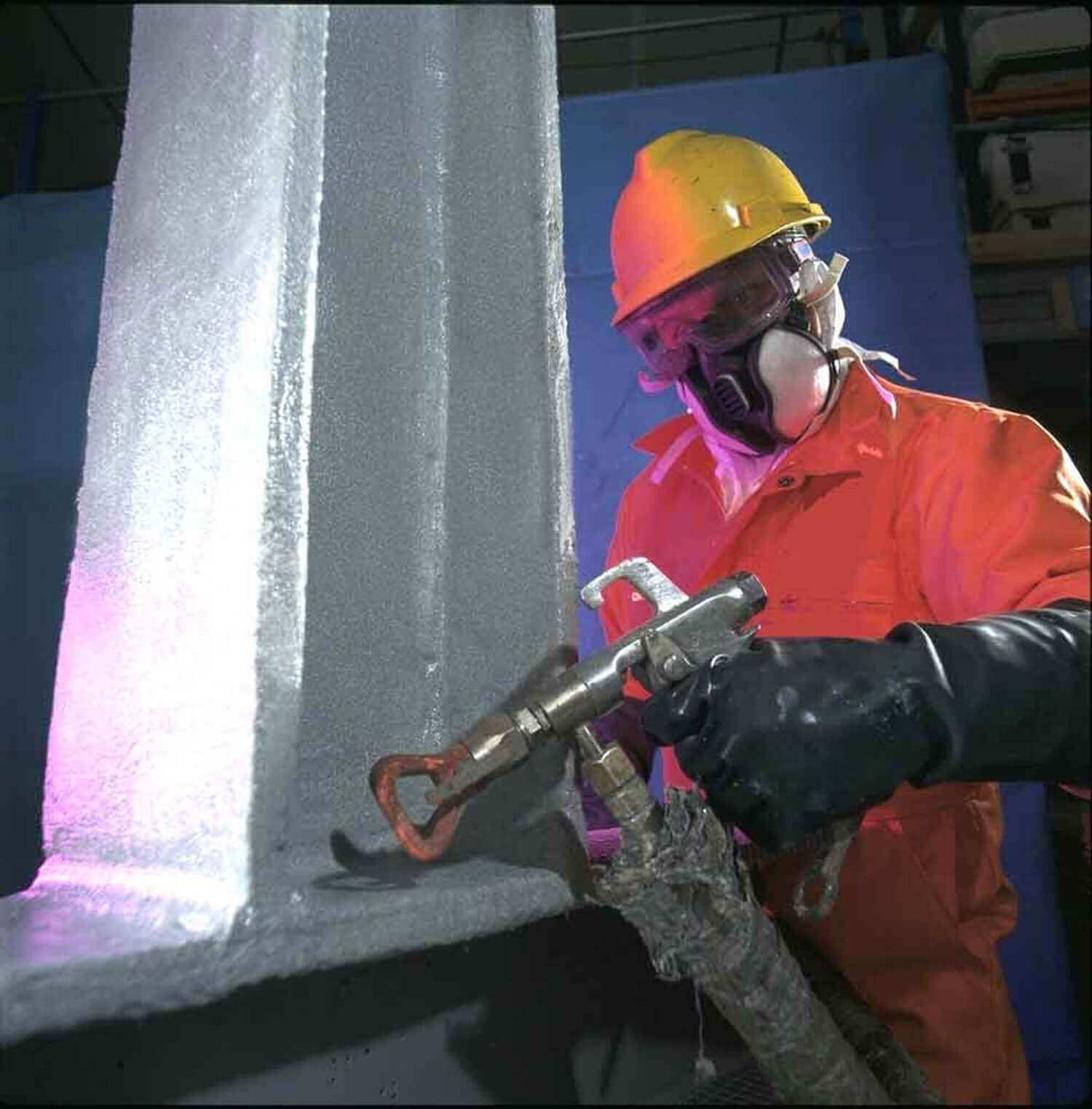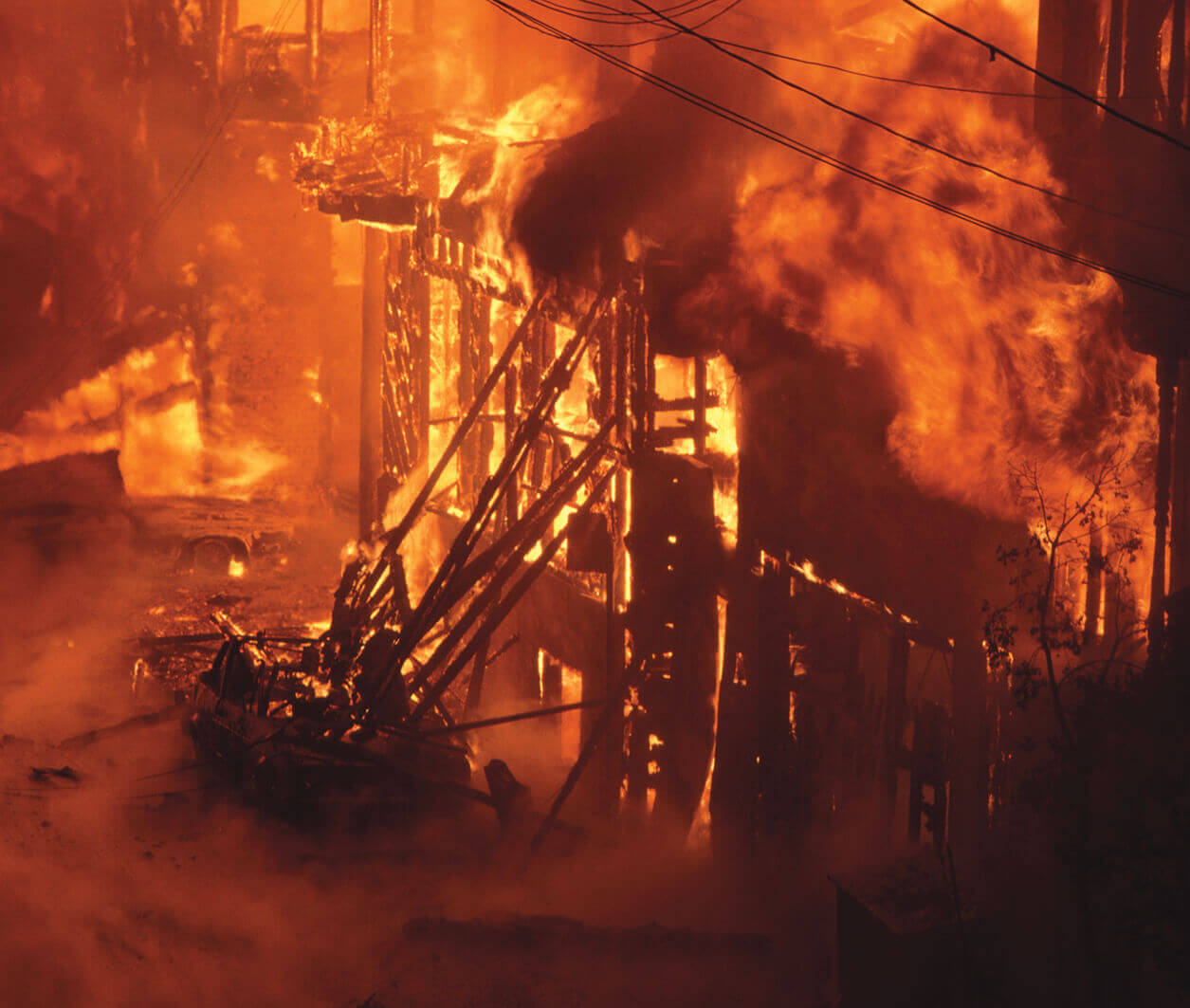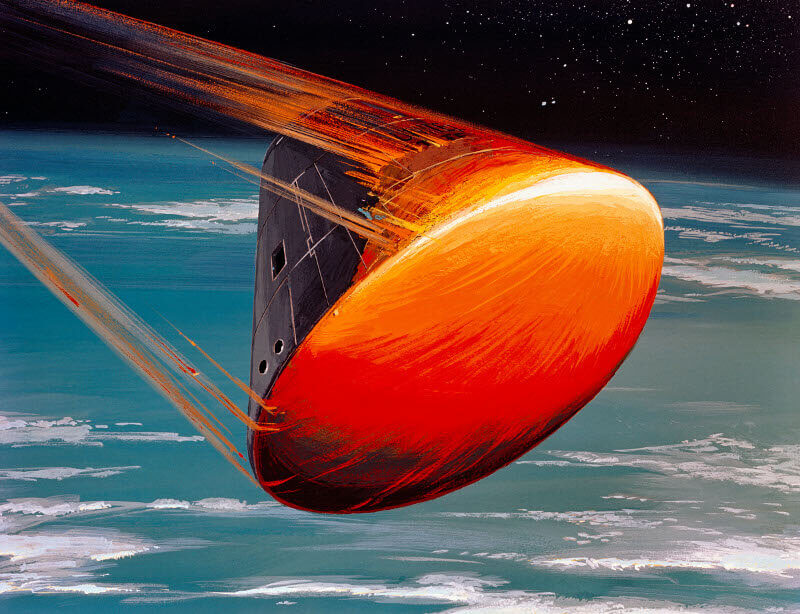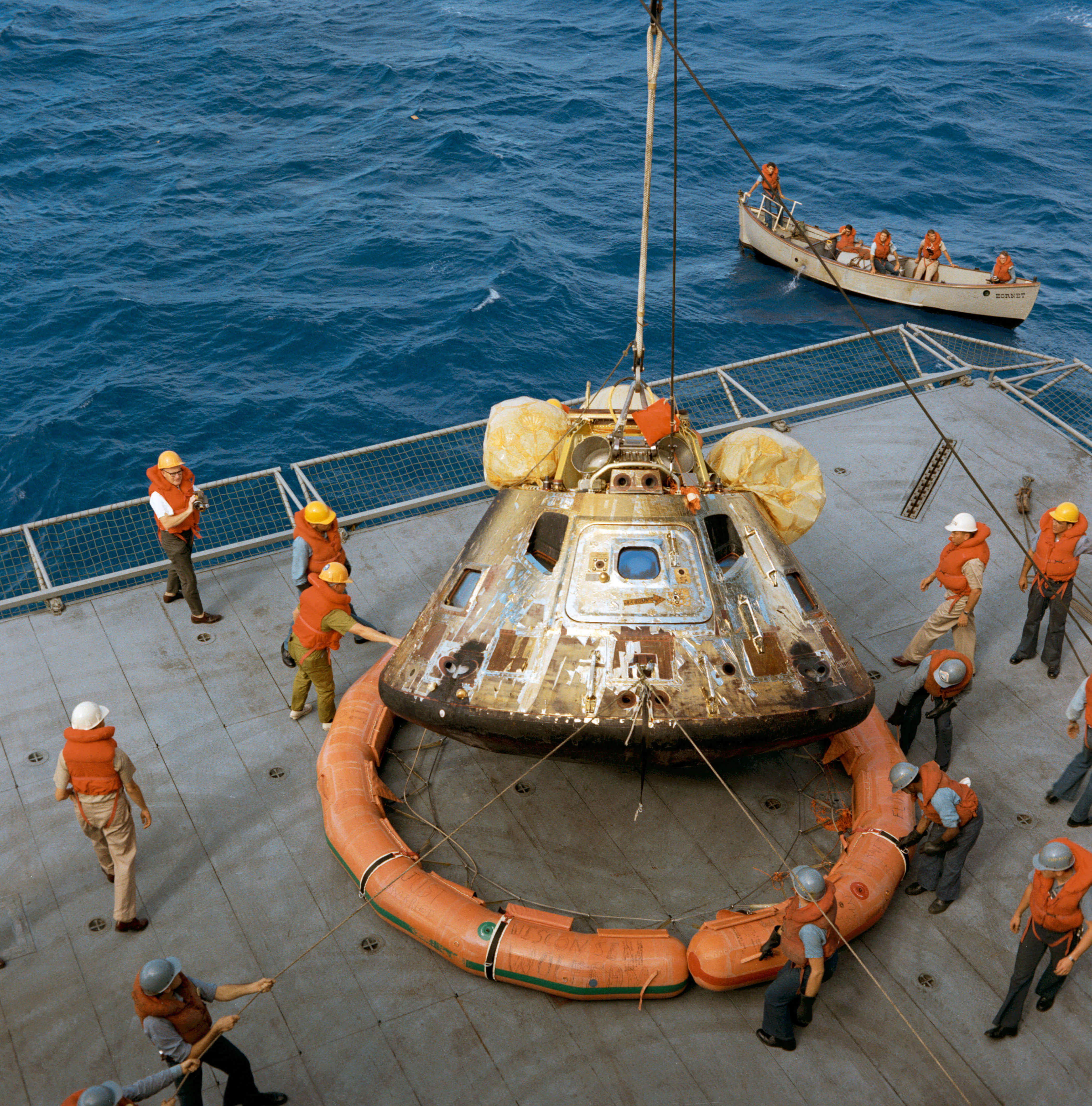



A special coating on the Apollo heat shield burns away to dissipate energy while charring to form a protective heat-blocking barrier. Through NASA cooperation, this fire-retardant advancement has been used by private industry to create aircraft paints and foams, the world’s first fire-insulating epoxy that expands in high heat, and defensive coatings for structural steel that slow building collapse and provide more time for escape.
Returning from the moon, the Apollo command module would smack into Earth's atmosphere going more than 20,000 miles per hour — with nothing but air to slow it down. Gasses rushing over the front of the capsule formed a shockwave that heated the air to the point of breaking apart molecular bonds, producing a plasma that scorched surfaces with temperatures in the thousands of degrees. To keep spacecraft and crew safe, NASA fitted the capsule with a heat shield — essentially a thick, insulating material designed to burn off at a controlled rate, dissipating heat.
Learn more about how NASA helped develop technology that impacts fire resistant reinforcement within your city's public safety environment!